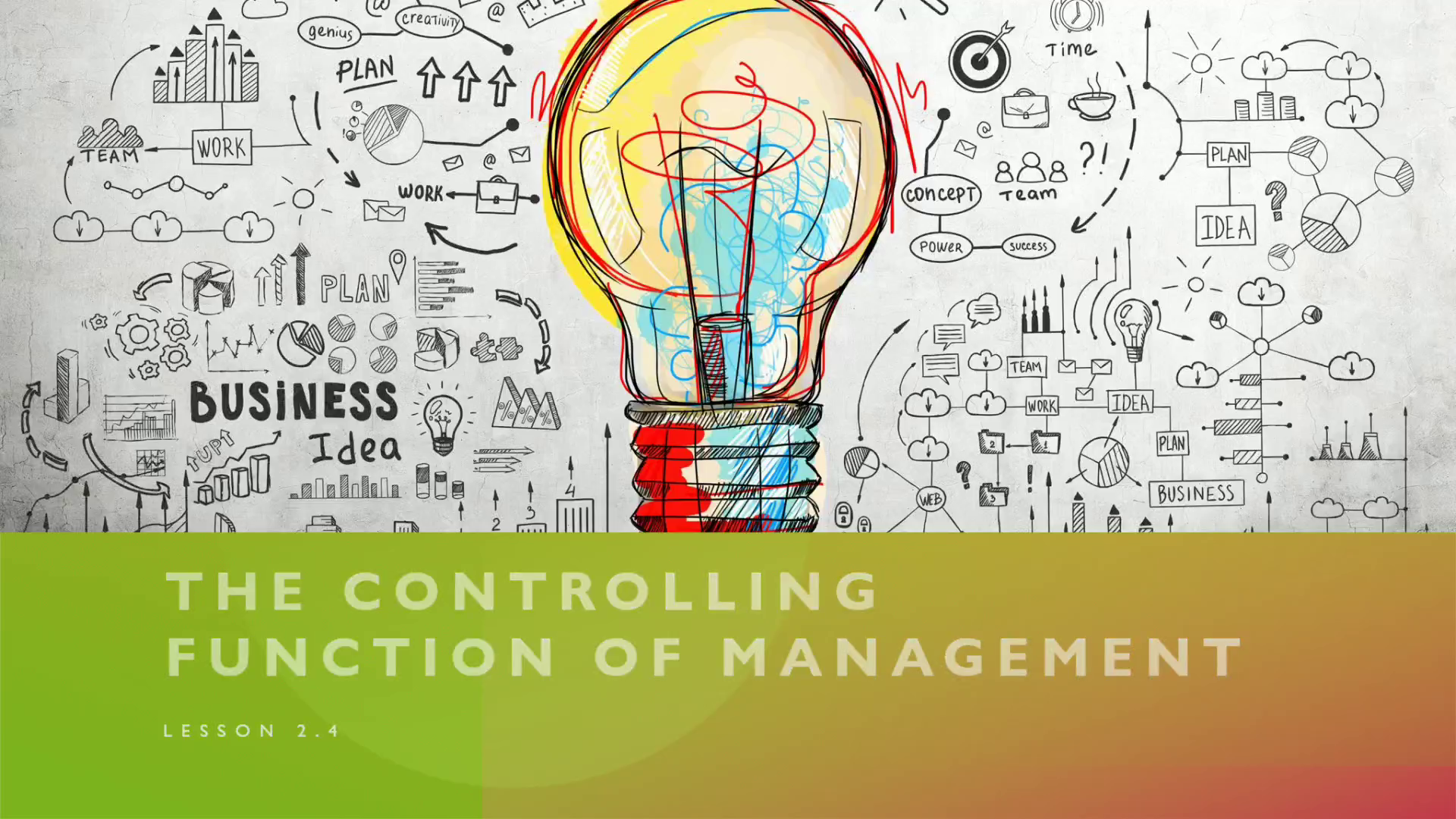
Page 1 (0s)
[Audio] Welcome to Lesson 2.4: The controlling function of management..
Page 2 (10s)
[Audio] In Module 1, we introduced the four primary functions of management—planning, organizing, leading, and controlling. In this lesson, we will delve deeper into the controlling function, exploring its importance, steps, and techniques. Effective controlling involves monitoring and evaluating organizational performance, ensuring that objectives are being met and identifying areas for improvement..
Page 3 (37s)
[Audio] Importance of Controlling Controlling is essential for organizations for the following reasons: Ensures that organizational goals and objectives are being achieved, keeping the organization on track and focused on its priorities Provides feedback on the effectiveness of planning, organizing, and leading, enabling managers to identify issues and take corrective action as needed Enhances efficiency and productivity by identifying areas for improvement and optimizing processes and resource allocation Minimizes risks and uncertainties by regularly monitoring performance and detecting deviations from the established plan.
Page 4 (1m 20s)
[Audio] Steps in the Controlling Process The controlling process typically consists of the following steps: Set performance standards: Establish clear, measurable, and attainable standards for evaluating organizational performance, based on the objectives defined in the planning process. Measure actual performance: Collect and analyze data on various aspects of the organization's performance, such as financial performance, operational efficiency, and employee productivity. Compare actual performance with standards: Identify deviations or gaps between the actual performance and the established standards, determining areas where improvement is needed. Take corrective action: Address the identified deviations by implementing changes, such as modifying strategies, reallocating resources, or providing additional training and support to employees. Review and adjust: Continuously monitor performance and adjust the standards, measurement techniques, and corrective actions as needed to account for changes in the environment or organizational objectives..
Page 5 (2m 34s)
[Audio] Controlling Techniques There are various techniques that managers can use to monitor and evaluate organizational performance, including: Budgetary Control: Compare actual financial performance with the established budget, identifying variances and taking corrective action as needed. Key Performance Indicators (KPIs): Monitor a set of predefined metrics that are critical to the organization's success, such as customer satisfaction, employee turnover, or market share. Balanced Scorecard: Evaluate performance from multiple perspectives, including financial, customer, internal processes, and learning and growth, to provide a comprehensive view of the organization's performance. Management by Objectives (MBO): Set specific, measurable objectives for individual employees or teams, and regularly review progress toward these objectives, providing feedback and support as needed. Benchmarking: Compare the organization's performance with industry standards, best practices, or the performance of competitors, identifying areas where the organization can improve or innovate..
Page 6 (3m 51s)
[Audio] Summary In this lesson, we have explored the controlling function of management, highlighting its importance, steps, and techniques. Effective controlling involves monitoring and evaluating organizational performance, ensuring that objectives are being met, and identifying areas for improvement. As we conclude our examination of the four functions of management, you should now have a comprehensive understanding of the management process and how planning, organizing, leading, and controlling are interconnected to facilitate organizational success..